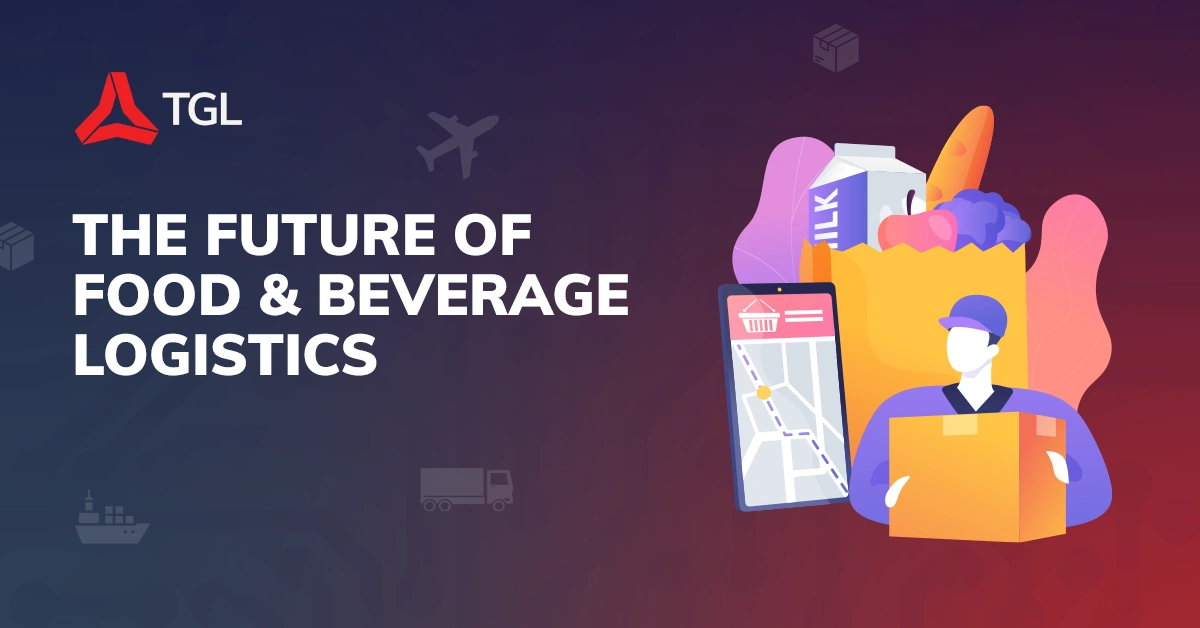How freight forwarding works?

How does freight forwarding work? You might be a little confused as to where to start with freight forwarding or the logistics process as a whole. Who handles what? Where does it go? What are the steps in the process? These might be some of the questions you might be asking yourself... but never fear TGL is here. Let’s break it down nice and simple.
What is a freight forwarder?
Freight forwarders specialise in the process of importing and exporting goods. Consider them similar to a travel agent, someone who arranges the itinerary for goods instead of people. They act as the intermediary between air, sea and land carriers to help businesses with the logistics of shipping goods from an origin to destination. Their goal is to provide the customer with the most efficient way of shipping, they use their expert knowledge and experience in the field to assess which mode of transport would work best based on the client needs. A good freight forward should always be proactively thinking for the customer so they can get their goods to market in the most efficient and competitive way.
What services do freight forwarders provide?
All freight forwarders provide a door-to-door shipping service or assist with any stage of the shipment's life cycle as dictated by the relevant Incoterm. They often have an established network of carriers from airlines, shipping carriers, rail freighters, truckers, and rail operators. A competent freight forwarder should also be well versed in warehousing solutions such as 3PL, and e-commerce operations.
Global trading and shipping of goods involve a lot of complicated paperwork and understanding various trade rules and regulations. Freight forwarders can help you navigate each countries customs clearance, documentation requirements and government surcharges or taxes.
How the freight forwarding process works
The freight forwarding process begins when the importer (consignee) and the supplier (consignor) reach an agreement on purchase terms and Incoterms. All responsibilities for the stages of the freight forwarding process such as the origin handling, inspections and documentation are dependent on which terms of trade (Incoterms) is chosen.
Once the commercial invoice is exchanged between the two parties, a freight forwarder is engaged to manage the transportation process. Specifically, if businesses are moving goods internationally, freight forwarders take away all of the headache as they have experience moving goods through international suppliers. This is one of the many benefits of using a freight forwarder.

Stage One – Origin Handling and Export Clearance
The first stage involves the movement of goods from a supplier’s location to the origin port for direct transportation or to the freight forwarders warehouse.
Firstly, freight forwarders will place an intended booking with a sea, air or land carrier. They will then facilitate the inspection, and authentication of the cargo contents by the relevant regulatory body (customs department) of the origin country. This is typically done by arranging trucking of the cargo to an export facility. The time taken for this step can vary depending on the type of goods, volume being moved and the distance between locations.
Stage Two – Export Customs Clearance
The next stage involves gaining clearance for the goods to leave its country of origin. Customs clearance documentation should be co-ordinated and prepared between the supplier and receiver of the goods along with the nominated carrier of the shipment to ensure all paperwork meets the regulatory and carrier’s requirement. Consider this set of documentation as the passport for the shipment. Without it the shipment will not move. When the goods are approved, it will be placed into international transit.
Stage Three – Import Customs Clearance
Once the cargo arrives at its final country destination, the shipment’s paperwork will be checked by the country’s customs and quarantine authorities. These documents can be prepared by the freight forwarder or customs broker prior to the arrival to ensure efficiency in the process.
In Australia, the Australian Border Force inspects imported goods through strict bio security regulations. Depending on the products, imported goods may also be subject to quarantine inspection by the Australian Quarantine Service (AQIS). Additional movements and handling of the goods may be required depending on the direction by the regulatory body and what they need to do with the goods such as random inspections or further fumigation.
Stage Four – Destination Arrival and Handling
Once the shipment is approved by customs, freight forwarders will organise the final handling of the cargo. They can deliver directly to the freight forwarder’s warehouse if 3PL warehousing is required or straight to the final destination at an agreed time of the consignee/receiver.
Do I need a freight forwarder?
The exporting and importing process involves extensive knowledge in logistics planning and a comprehensive understanding of the documentations required. Freight forwarders are specialists in the transportation of goods and can offer their expertise and a widespread network of contacts to simplify the process and help save your business time. Contact the team at TGL today on 1800 845 845 or sales@tgl.co for all your freight forwarding needs.
| At TGL, we offer business to business logistics services, including sea freight, air freight, domestic freight, warehousing, and customs clearance to all industries. Get a quote today. |
| If you require further information about us and the services we provide, book a free no-obligation consultation session with our logistics professionals. |
Sources:
https://www.bansarchina.com/freight-forwarding-process/
https://www.mach1global.com/what-is-the-freight-forwarding-process/
https://www.icecargo.com.au/shipping-process-2/
https://www.elitelogix.ca/blog-post/process-freight-forwarding/


